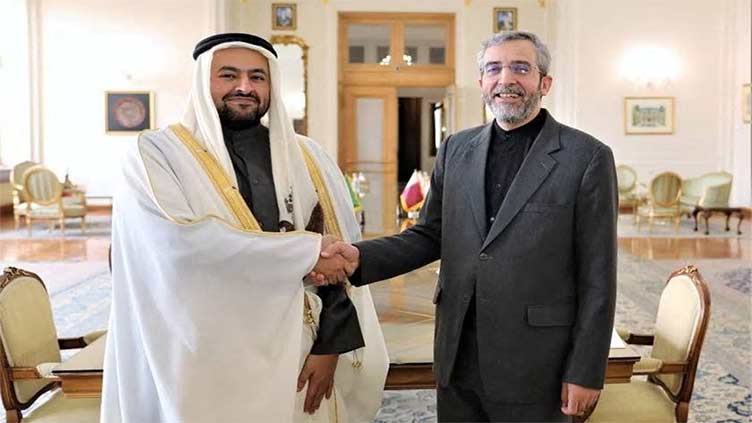Iran, US on verge of prisoner swap under Qatar-mediated deal

World
As a first step, Iran on Aug. 10 released four US citizens from Tehran’s prison into house arrest
DUBAI/DOHA (Reuters) – When $6 billion of unfrozen Iranian funds are wired to banks in Qatar as early as next week, it will trigger a carefully choreographed sequence that will see as many as five detained US dual nationals leave Iran and a similar number of Iranian prisoners held in the US fly home, according to eight Iranian and other sources familiar with the negotiations who spoke to Reuters.
As a first step, Iran on Aug. 10 released four US citizens from Tehran’s Evin prison into house arrest, where they joined a fifth, who was already under house arrest. Later that day US Secretary of State Antony Blinken called the move the first step of a process that would lead to their return home.
They include businessmen Siamak Namazi, 51, and Emad Sharqi, 59, as well as environmentalist Morad Tahbaz, 67, who also holds British nationality, the U.S. administration has said. The Tahbaz and Shargi families did not respond to requests for comment. A lawyer for the Namazi family declined to comment.
/cloudfront-us-east-2.images.arcpublishing.com/reuters/6VYDNPGJ3JK3HBHQSAZYM6GPVY.jpg)
The identities of the fourth and fifth Americans, one of whom according to two sources is a woman, have not been disclosed. Reuters couldn't establish which Iranian prisoners, in turn, would be swapped by the US.
At the centre of the negotiations that forged this deal between the superpower which Iran brands the "Great Satan" and the Islamic Republic which Washington calls a state sponsor of terrorism is the tiny but hugely rich state of Qatar.
Doha hosted at least eight rounds of talks involving Iranian and US negotiators sitting in separate hotels speaking via shuttle diplomacy, a source briefed on the discussions said, with the earlier sessions focused mainly on the thorny nuclear issue and the later ones on the prisoner releases.
Doha will implement a financial arrangement under which it will pay banking fees and monitor how Iran spends the unfrozen cash to ensure no money is spent on items under US sanctions, and the prisoners will transit Qatar when they are swapped, according to three of the sources.
"Iran initially wanted direct access to the funds but in the end agreed to having access via Qatar," said a senior diplomat. "Iran will purchase food and medicine and Qatar will pay directly."
Reuters pieced together this account of previously unreported details about the extent of Qatari mediation of the secret talks, how the deal unfolded and the expediency that motivated both parties to clinch the prisoner swap deal. Reuters interviewed four Iranian officials, two US sources, a senior Western diplomat, a Gulf government adviser and the person familiar with the negotiations.
All of the sources requested anonymity because of the sensitivity of a deal which hasn’t been fully implemented.
A State Department spokesperson said the US was not ready to announce the exact timing of the prisoner release. The Department also declined to discuss the details of what the spokesperson termed "an ongoing and highly sensitive negotiation.”
‘YOU CAN BUILD TRUST’
The US administration has not commented on the timing of the funds transfer. However, on Sept 5, South Korean foreign minister Park Jin said efforts were under way to transfer Iran's funds.
"The US-Iran relationship is not one characterized by trust. We judge Iran by its actions, nothing else," the State Department spokesperson added.
Washington consented to the movement of Iranian funds from South Korea to restricted accounts held by financial institutions in Qatar, but no money is going to Iran directly, the spokesperson added.
Qatar’s Ministry of Foreign Affairs did not respond to Reuters' request for comment on the details of negotiations, Qatar’s role in the talks or the terms of the final agreement.
Iran’s foreign ministry and its UN mission did not respond to detailed questions regarding this story.
The sources' account of the negotiation shows how the deal sidestepped the main US-Iran dispute over Iran's nuclear aims, culminating in a rare moment of cooperation between the long-time adversaries, at odds on a host of issues from Iran's nuclear program to the US military presence in the Gulf.

